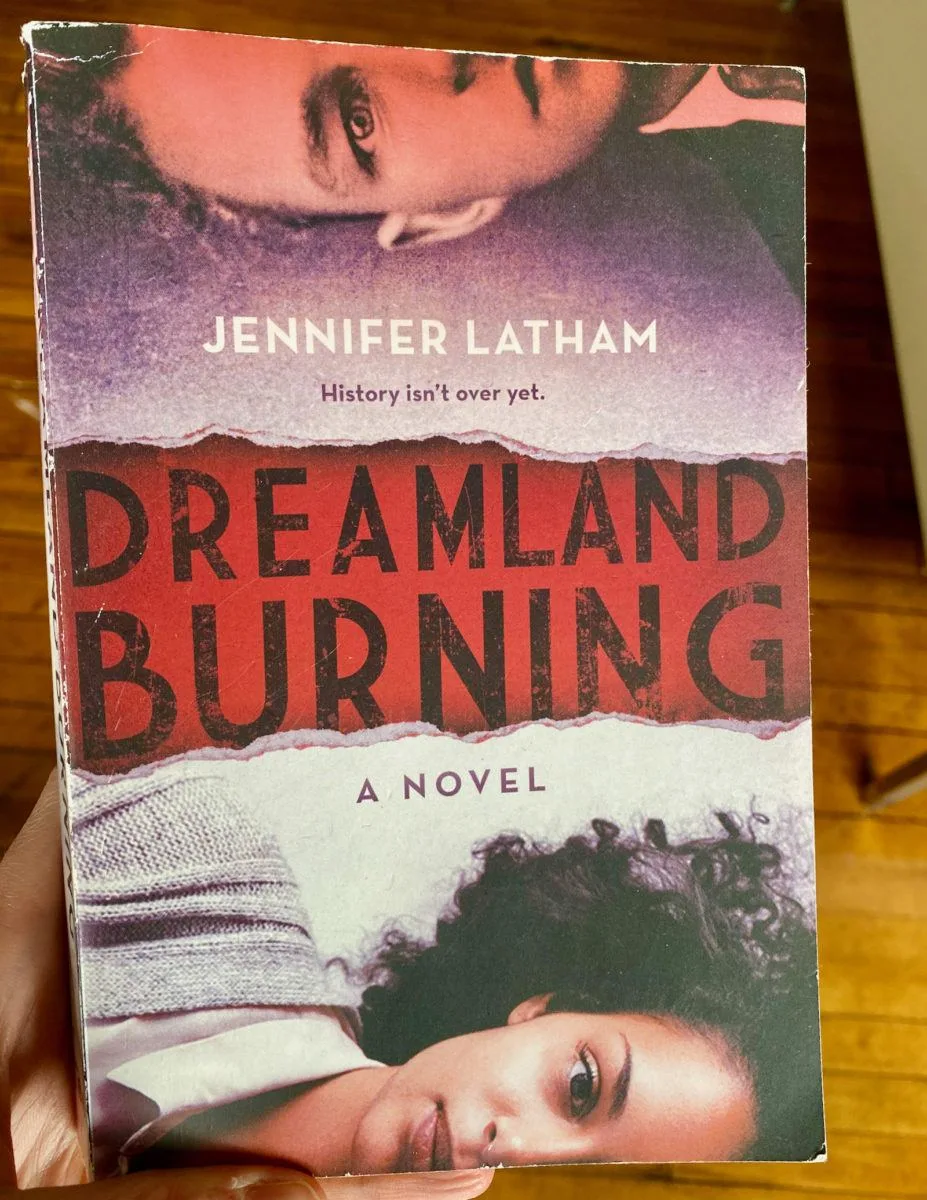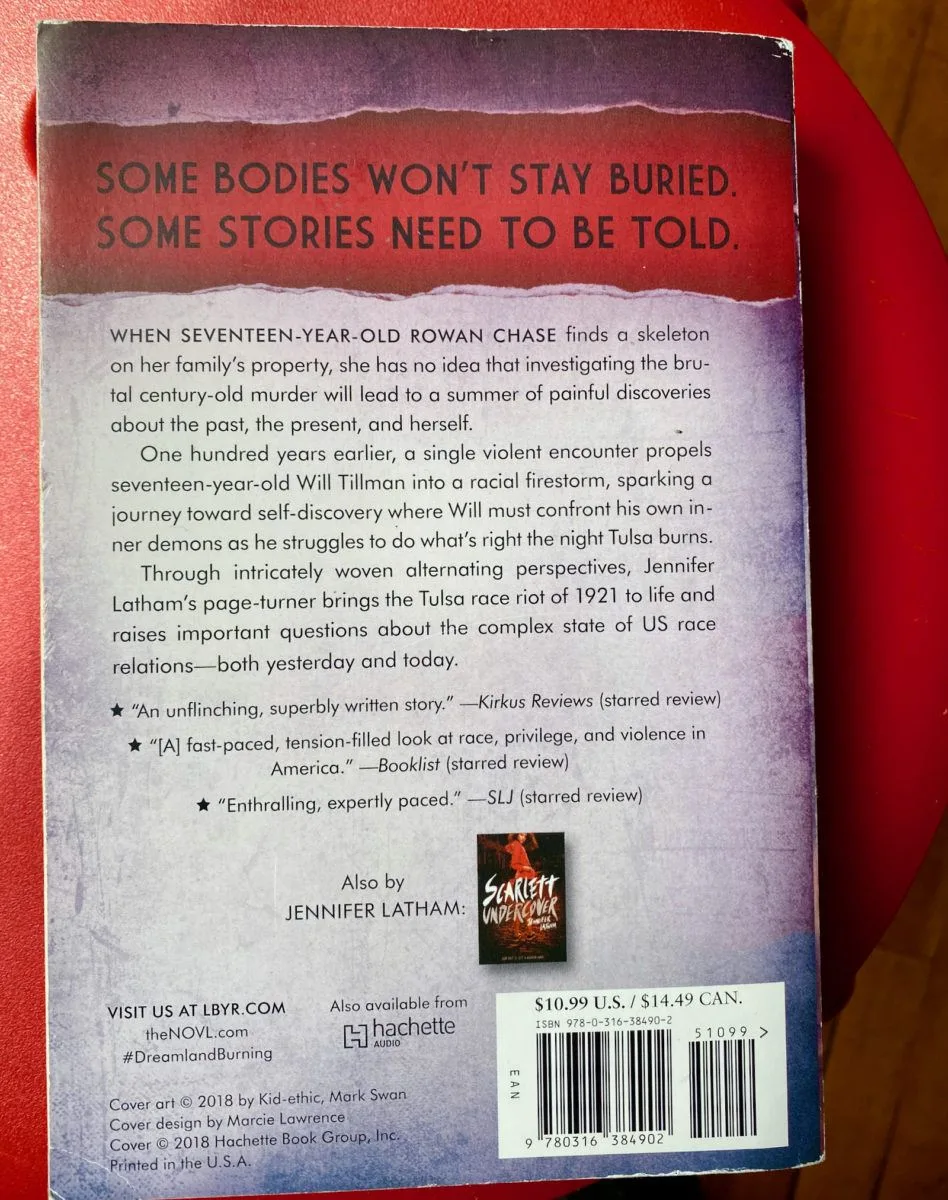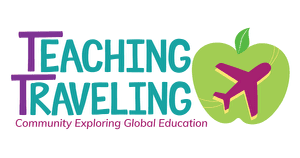A Novel That Makes an Important Topic Accessible
It is the pleasure of every English teacher to be able to HEARTILY recommend a book — especially one that makes a vitally important topic accessible and engaging. Thus is is my honor to tell you about the 2017 novel, Dreamland Burning by Jennifer Latham: a murder mystery which takes place both during the present day, and during the 1921 Tulsa Massacre: a shocking event which happened exactly 100 years ago that has been hidden for far too long.
Before I explain more about why this book is such a key read, take note of the photo below. It shows my classroom copy of Dreamland Burning, which is now clearly creased thanks to the loving hands of all the students who’ve checked it out over the past two years, then returned it with the breathless words, “This book was AWESOME. Thank you for the suggestion! I learned so much, and actually enjoyed reading.”

Reasons My Students and I Loved Dreamland Burning
Why has this novel been such a hit with so many readers I’ve recommended it to? Let’s break down the reasons that Dreamland Burning is a great book.
1. It brings a VITAL piece of history to life.
The destruction of Black Wall Street in Tulsa in 1921 is an absolutely essential part of history that has been erased from public discourse for over a century. Students — and so many of us adults — are HUNGRY to learn the true stories that make up our country, and Dreamland Burning helps teach them through the art of historical fiction.
Why fiction? As Tom Hanks argues in a recent New York Times article, it is vital for the Tulsa massacre to at last be taught in our schools’ history books — but it is also vital for it to be portrayed in “historically based fiction entertainment” like novels. While a textbook provides one form of learning, a great movie, TV show, story, or even historically-connected doll provides the EMOTIONAL connection which opens our hearts to a profound new understanding of events. Numbers hit our mind, but human tales reach our soul.
2. It’s a fast-paced, engaging thriller.
Dreamland Burning is a true page-turner. The plot has so many mysteries and hidden connections that you’re propelled through 400 pages (or 8 hours on audio) with breathless speed. I don’t want to give away too much, but when you realize the story’s secrets, you’ll shout, “AHH!” with amazement.
It’s also important to note that while this book centers on a heavy topic, it glows with the renewing spirit of humor, beauty, and joy. The relationships portrayed in the text are ones I still think about with a smile to this day.
3. The characters and plot are brilliant and modern.
Chapters in Dreamland Burning alternate between the 1920s (featuring a male character whose father is white and mother is Native American) and the modern day (with a female character whose father is white and mother is Black). There is a connection between the characters… but you don’t find out what until the end!
With this cross-century, cross-identity structure, the author is able to explore a stunning range of topics, drawing webs that highlight the nuanced nature of intersectionality and racial equity. The book feels decidedly modern, touching on teen identity questions that I’ve rarely seen addressed in older literature, and which resonate strongly with my students.
4. It’s good for age 12 (with a caveat) through adult.
I currently teach 7th grade, and (from firsthand experience using and discussing the book with students over the past several years) would say that Dreamland Burning is MOSTLY appropriate for 12 year-olds and up, but is much more successful with 7th graders with well-developed maturity — and a slam dunk for older students and adults.
The biggest issue my 7th graders had with the book was not so much that they were jarred by the content (I’d judge the book a PG-13 rating), but more that they weren’t used to reading a 400-page text, and also tended to miss some subtle — but important — elements of the story. (I’ll discuss in a later section of this article how to support students of all ages with this novel.)
Now, although Dreamland Burning is technically a “young adult” book, every adult I’ve recommended it to has ended up very grateful that they read it. They enjoyed it deeply, while also learning hidden history. I’m eternally thankful to my friend Sally for suggesting the book to me all those years ago!
5. It pairs perfectly with The Outsiders.
I have another article coming soon about why Dreamland Burning and the wildly popular classic text,The Outsiders, fit so well together (subscribe to stay updated when it’s published), but without giving away why, know that the two novels play off each other perfectly.
6. The author is accessible and wonderful.
One of the greatest surprises of reading and teaching Dreamland Burning has been the realization that the author, Jennifer Latham, is a delightful and kind person who responds to social media outreach when she’s able to. Ms. Latham (who lives in Tulsa) was even able to do a Zoom Q&A session with my students one year! The kids were positively awe-struck, and many of them have since come back to marvel with me about how impactful Jennifer’s thoughts were. Latham poured three full years of research and passion into this novel, and it shows.

FAQs on Teaching Dreamland Burning
A. Which age group is this book best for?
Though I had relative success teaching Dreamland Burning to my 7th graders over the years, it’s probably best suited to 13 year-olds and up, as some of the topics are complex. Despite this, a mature, motivated, and worldly 11 year old could likely get a lot out of the book.
B. Are there disturbing parts of the text?
My overall rating of the book in terms of content warnings would be PG-13. Most of the disturbing elements are implied or hinted at, and several of my 7th graders missed them alltogether. That said, the reality of the Tulsa Massacre of 1921 is more horrific than any work of fiction. (Note that I’m not using the word “dark.”)
C. How long is Dreamland Burning?
The novel is 400 pages long in printed book form, and 8 hours in audiobook form. A technique that we’ve found effective is starting the text by listening to the audiobook to get into the flow, then switching to the printed book after the second chapter because eyes are faster than ears. Either format you choose, the library app “Libby” is a particular favorite for getting all versions of books for free. If you want to order on Amazon, here’s an easy affiliate link to buy Dreamland Burning.
D. Is it better suited as a whole-class text or for smaller groups?
Some considerations when choosing where and how to use Dreamland Burning: First, it can seem long to some students, and second, kids will need help understanding some of the concepts. Given this, let’s explore the options.
I started with using Dreamland Burning with my 7th graders as a required summer reading text, then discussing and building upon it in the first weeks of school. Having the whole summer to work with it helped support students who weren’t used to longer texts, but what we missed out on was the chance to talk through the book step by step. It was clear in the discussions when we returned to school that a chunk of students didn’t understand aspects that might have been better explored together if the class (or small groups) had read the text during the school year itself. In short, the novel quite a good summer reading choice, but this option works best for students who can independently manage the content and length.
What about the in-school whole-class option? Because I teach 140 students a day, we don’t have money to buy that many copies of the book, so whole-class text reading of Dreamland Burning during the school year has not been possible for me. That said, even if we did have the copies, I think the text is better suited for upper grades (9th and up) if you’re going to try whole-class format, because then the book can be read at an appropriately fast speed, thus not taking up an entire semester. (Don’t get me wrong — I’d be happy to discuss the book all semester, but there is coverage pressure to hit other texts, too.)
A final option for using Dreamland Burning is to offer it as a “choice book” or “book club” option, where individual students or small groups pick it for independent reading, usually along with a required class element (either presentations, discussions, or tests) once done reading. What’s great about this option is that students who pick the book usually love it, and find excellent discussion topics with their small group if they’re doing a “book club” format.
What’s problematic about it is that this small group or individual format reading often has less teacher participation than a whole-class text, so students may miss major elements of the book without that adult guidance. If you have passionate enough students reading, however, they’ll understand why the book is so powerful, even if there’s no English teacher there to guide them step by step. You know your students best, so pick the option which is the most fitting match for your learners and your goals.
If you are a parent or guardian reading this, and are curious whether Dreamland Burning could be a match for your child, I strongly encourage you to read the novel at the same time as them, because when they get to the shocking plot twists, they’ll want someone to discuss them with!
E. What are good activities or projects with Dreamland Burning?
I would caution any teacher against getting too dryly robotic when working with this novel. A book this powerful should not be reduced to a multiple choice test.
The #1 best activity for Dreamland Burning is a series of “fishbowl” discussions in which half the students are in the inner circle discussing questions that they generate, then the outer circle gives meta-feedback about the discussion as a whole, highlighting powerful insights and good discussion moves like building on each other’s ideas. This activity fits best because the topics in the book are so engaging that discussions should be student-centered, but the subject material is weighty enough to merit teacher guidance when possible — especially for younger students.
You could also potentially use the text for a literary analysis essay or visual chart which examines the choices the author made to form such a powerful book, as her very intentional details of character and plot structure are inspiring. Even better, segue this analysis into using the novel as a mentor text for students to be inspired to write their OWN short novella which flips between two time periods and illuminates an important era from the past. This project could be done in interdisciplinary partnership with your corresponding History teacher.
Dreamland Burning, in Sum
If you’re intrigued by this rave review, I hope you’ll take the leap and give Dreamland Burning a try! (Use this affiliate link to see other reader reviews of the book.) If you do, I’d love to hear your reactions in the comments section. If you’ve already read it, do leave your thoughts, too.
For other recommendations, be sure to check out my review and analysis of the middle grades book, Look Both Ways by Jason Reynolds, the back-story to A Long Walk to Water with Salva Dut, and a deep dive into the school integration podcast, “Nice White Parents.” I look forward to sharing more curriculum ideas, and am thankful to the authors who create such wonderful resources!

The author, Lillie Marshall, is a 6-foot-tall National Board Certified Teacher of English from Boston who has been a public school educator since 2003. She launched TeachingTraveling.com in 2010 to share expert global education resources, and over 1.6 million readers have visited over the past decade. Lillie also runs AroundTheWorld L.com Travel and Life Blog, and DrawingsOf.com for educational art. Do stay in touch via subscribing to her monthly newsletter, and following @WorldLillie on social media!

Jane
Sunday 17th of October 2021
Dreamland was a fantastic recommendation. We read it as a family of 6 ranging in age from 12-70. So many great issues and compelling story. Audible is fabulous, too, to hear the characters’ voices.
Lillie Marshall
Sunday 17th of October 2021
I'm thrilled to hear you also loved the book, and that it was such a hit for that large age range! Indeed, it spurs so many key discussions.